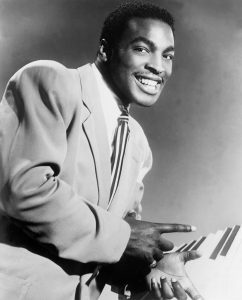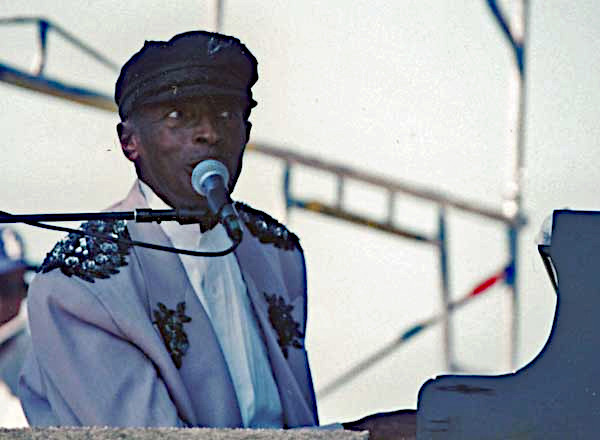This is the latest from The Bluesmobile’s C.C. Rider, who spends her life venerating the founding fathers of the blues. She’s walked the crooked highways of this singing country to resurrect the voices of the past. With the dirt of the Delta on her hands, she sleeps in the shadow of the giants on whose shoulders popular music now stands.
 Charles Brown
Charles Brown
(September 13, 1922 – January 21, 1999)
Unlike your stereotypical blues man, Texas-born Tony Russell Brown, called Charles, was highly educated. He graduated from college with a degree in Chemistry. Taught science and worked as an electrician and an engineer. A scientist through and through—he was also a classically trained pianist. Who just couldn’t shake his love of music. So Charles Brown moved to California and became a forerunner of the West Coast Sound. What’s beenUnlike your stereotypical blues man, Texas-born Tony Russell Brown, called Charles, was highly educated. He graduated from college with a degree in Chemistry. Taught science and worked as an electrician and an engineer. A scientist through and through—he was also a classically trained pianist. called the “post-war blues clean-up movement.” Smooth vocals, light piano tinkling—a more relaxed approach to the blues. Think Nat King Cole.
In fact it was Charles Brown who replaced Nat King Cole on the LA club scene when Nat hit it big nationally. And that’s how Charles got his break. As a key member of a trio called Johnny Moore’s Three Blazers, Mr. Brown struck gold with a hit called “Drifting Blues.” The song topped the R&B chart for 6 months. And in so doing, totally changed the face of blues performance. Johnny Ace, Percy Mayfield, Ray Charles. They all took their cues from Charles Brown. Here it is—that first hit. From 1943, Johnny Moore’s Three Blazers, featuring Charles Brown on vocals and piano. “Drifting Blues.”



